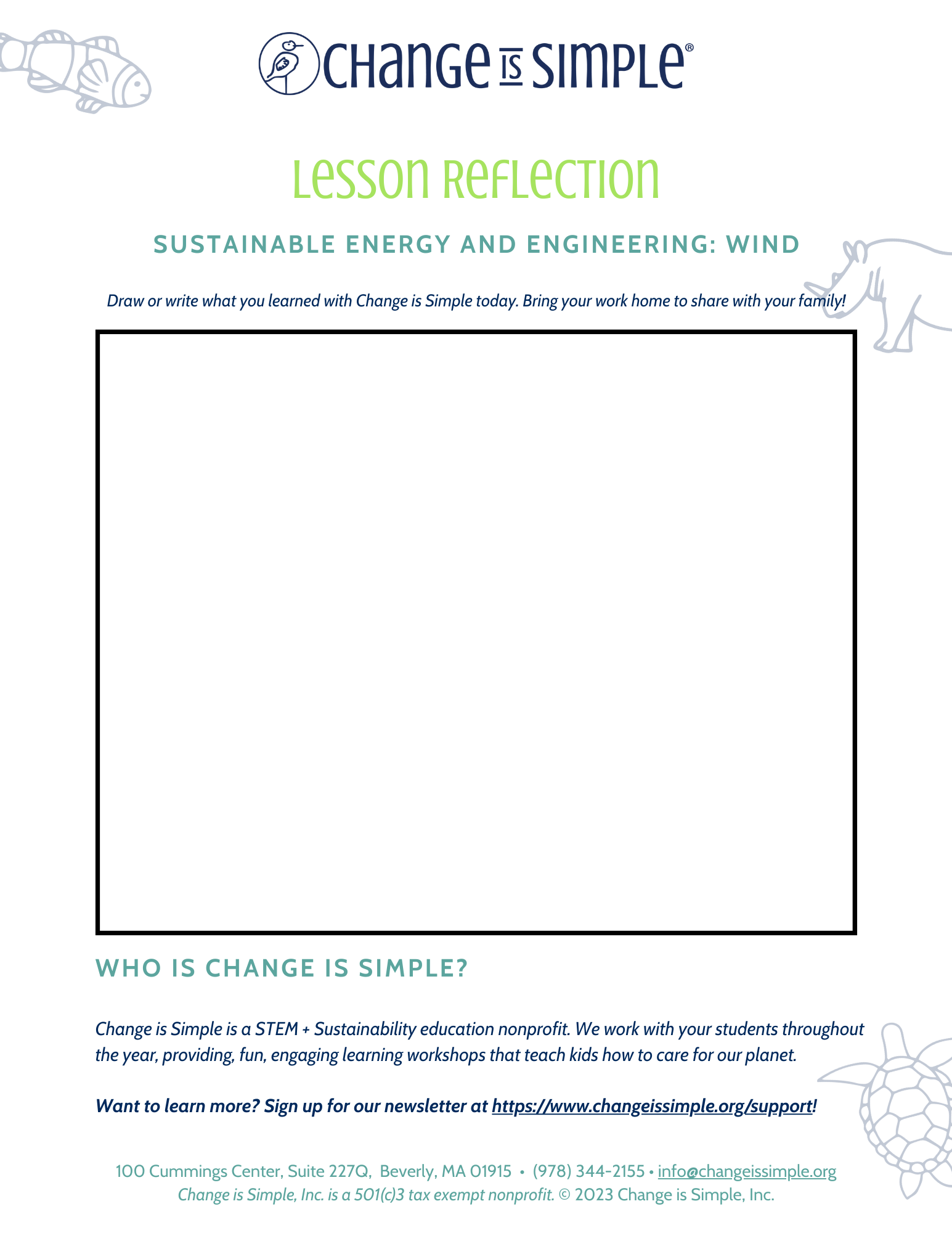wind energy and engineering
Lesson Objectives:
At the end of the workshop, students will be able to:
Learn the difference between renewable and non-renewable resources
Learn examples of renewable and non-renewable energy sources
Be familiar with renewable energy generated by wind turbines
Understand how we can generate and distribute energy without causing pollution
Engage in teamwork and use problem-solving skills to construct
functional wind turbines
Essential Questions:
How does sustainable energy benefit environmental health?
In what ways do renewable energy sources impact human health?
How can innovations in technology benefit human and environmental health?
Why are renewable energy sources not utilized more in the US?
Why are renewable energy sources better for the environment?
Explore our resources
Click on the images to access each resource (available as a PDF or webpage)
Take-Home Guide
Information for parents & legal guardians (available in English and Spanish).
Información para padres de familia y tutores legales (disponible en Inglés y Español).
Standards Alignments
Explore the ways our program aligns with CCSS + NGSS standards.
Vocabulary
Quiz your students on vocabulary used during our lesson!
Challenge Guide
Completing this challenge will help your school become a CiS Certified Sustainable School!
Energy Infographic
This infographic explains different examples of renewable and non-renewable energy sources.
Background Information
Understanding Energy Sources and Their Environmental Impact
Energy use is a key aspect of society, and decreasing the environmental impact of energy production is a crucial goal. The majority of energy is currently produced by burning fossil fuels, such as oil, coal, and most commonly methane gas, in power plants. These nonrenewable resources produce carbon dioxide (CO2) when burned.
The Impact of Fossil Fuels
Carbon dioxide is a greenhouse gas that is released into the atmosphere when fossil fuels are burned. Greenhouse gases create a layer in our atmosphere that trap heat. This trapped heat acts like a blanket around the earth, keeping heat in and heating up our Earth, causing climate change.
The Role of Renewable Energy Sources
The best alternatives to fossil fuels are renewable energy sources like solar, wind, and hydropower. These forms of energy are important because they will never run out. Renewable energy sources are also beneficial for the environment because they do not release carbon dioxide during energy production. Since carbon dioxide is a major contributing factor to climate change, replacing fossil fuels with renewable energy sources helps slow climate change and environmental degradation.
Intermittent Renewable Energy Sources
It is important to be aware that some renewable resources are considered intermittent energy sources. Energy is only produced when there is strong enough wind, sunlight, or water flow. However, future solutions with energy storage options continue to strengthen the case for switching to alternatives.












